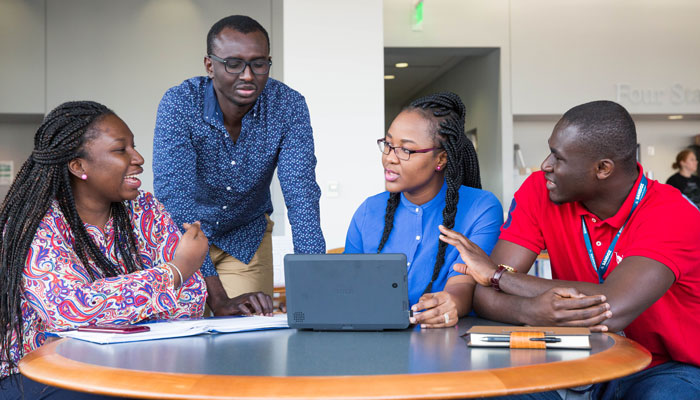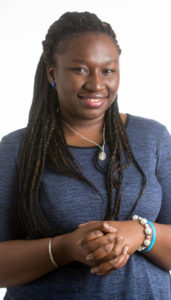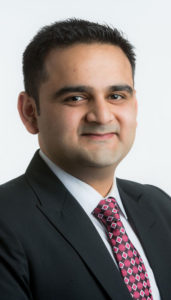Globe-hopping grad students
By Alex Branch

A young dentist in Gandhinagar, India, packed some belongings, bid his family farewell and prepared for the first airplane flight of his life.
Rushil Acharya wasn’t nervous; he was excited about the 19-hour flight to the United States. He buckled into his seat and stared out the window as the jet sliced upward through the clouds.
How many?International students make up about 8% to 10% of UNTHSC’s student body. They come from 24 different countries How do international students find UNTHSC?Word-of-mouth between students attract most international students, who are attracted by HSC programs and its interdisciplinary approach to teaching. What do the needs?Support networks are essential to help them navigate a strange place with strange customs. |
More than 40 years ago, his grandfather, an Indian psychiatrist, had made a similar trek to the U.S. On this day, Acharya shared not only his grandfather’s destination but also his purpose – to enhance his health care skills and knowledge at an American university.
Acharya was joining more than 150 other gifted international students from across the world to study at UNT Health Science Center in Fort Worth.
“I always wanted an education in the United States,” said Acharya, now a second-year Master of Public Health student. “Helping one patient at a time is fine, but I came here to learn how to accomplish something bigger in my country.”
International students generally make up about 8 percent to 10 percent of the student population. In fall 2016, students from 24 different countries and five continents were enrolled at UNTHSC.
This rich diversity is cherished not only by international students who find a welcoming atmosphere on campus but also by faculty, staff and American students with whom they share classrooms, research laboratories and lounges.
“International students offer a perspective of the world that may be very different than our own,” said Thomas Moorman, EdD, Vice President of Student Affairs. “That perspective sparks dialogue and enriches the learning environment. It opens your eyes to things that you had not considered.”
Many international students get health care jobs and remain in the U.S. after completing their studies. Others return to their home countries equipped with abilities to improve health care systems and the quality of care for patients or prevent infectious disease.
The significance of well-trained health professionals overseas was underscored in September 2014 when a 42-year-old man from Liberia, where an Ebola outbreak raged, arrived in Dallas already infected with the deadly disease. Two nurses who cared for him were infected.
“In a global society, our health is dependent on that of our neighbors,” said Thaddeus Miller, DrPH, MPH, Associate Professor of Health Management and Policy. “A key part of domestic health security is the strengthening of health care infrastructure around the world, and our graduates often take a leading role as they carry their skills back home.”
A world away
How does someone 6,500 miles away become interested in a program at UNTHSC?

The Health Science Center does little international recruiting. Word-of-mouth communication between students impressed by the university’s innovative education programs and emphasis on interdisciplinary training attract most international students.
That’s what brought Ella A. Kasanga from Ghana. The young community pharmacist was finishing a master’s program in her home country when she got a phone call from a former classmate in pharmacy school, Mavis Tenkorang.
Tenkorang was then a first year student in the Pharmacology and Neuroscience Program in the Graduate School of Biomedical Sciences at the Health Science Center.
“She told me about all the opportunities here and what she was learning,” said Kasanga, now a first-year student. “It sounded like exactly what I wanted to do.”
How did Tenkorang find out about the program? From Jude Prah, another former student at the College of Pharmacy enrolled at the Health Science Center. A fourth former pharmacy school classmate, Anthony Oppong-Gyebi, also joined them in Fort Worth.
Today, the four Ghanaians study together and share friendship outside the classroom.
“You get one person who comes and has a good experience and then tells someone back home about it,” Dr. Moorman said. “We have many students who come not only from the same country as students before them but also the very same village. It’s a tight network.”
Support networks
Networks are crucial to international students.
Imagine arriving for the first time in a foreign country where you will spend two, three, four or more years removed from your families and culture, said Rakia Johnson, Director of Student and Scholar Immigration Service. You are in an unfamiliar city with no idea how to get an apartment, a driver’s license or even Internet service.

All international students meet with Johnson upon their arrival. She has already been in contact with them, sending information about apartments near campus and working with the school’s International Student Association to arrange rides from the airport.
Students from countries with larger student populations often establish networks of support. Acharya lives with four other Indian students in an apartment near campus. They plan bus trips to the grocery story together, visit museums and rely on another Indian student with a car for rides when they need to get somewhere off the bus route.
“I had not even seen the campus before I got here,” Acharya said. “If I had a question about how to do something or get somewhere, I knew all I had to do was ask and someone would help me.”
Not all students have classmates from their home countries. Mia Eriksson, a first-year Texas College of Osteopathic Medicine student, is the lone student from Finland on campus.
Eriksson often Skypes with her family back home. She didn’t go home for Christmas but spent it here with friends. The customs are different. In Finland most of the holiday festivities are celebrated Christmas Eve. Root vegetable casseroles and pickled fish are traditional meals.
But the Health Science Center does a tremendous job making international students comfortable, she said. Rakia Johnson guided her through immigration and visa paperwork after she was accepted.
“It is so complicated and has so many legal requirements for international students that if you make one mistake, you can get in trouble,” Eriksson said. “If you don’t have someone who knows what they are doing to help, then you might as well look at schools elsewhere.”
Hardships
International students encounter unique hardships.

This fall, economic woes ignited a country-wide banking crisis in Nigeria. That calamity impacted some Nigerian students studying abroad, including several at the Health Science Center. Though the students had money in their home country bank, Nigeria’s restrictions made the students unable to transfer funds. So the students struggled to pay tuition.
Dr. Moorman once visited the apartment of four students from India and discovered there was not a single bed in the home. He helped them get four mattresses to put on the floor.
“They weren’t complaining about it at all,” Dr. Moorman said. “It is very expensive for our foreign students to come here, and they feel a lot of pressure to succeed and make it work.”
Acharya, the Indian dentist, said a cousin who lives in Irving has helped him overcome obstacles. After earning his Master’s of Public Health, he hopes to apply for a one-year residency program in San Antonio that combines dentistry and public health.
Oral hygiene is a serious problem in India. Few people can pay for routine care so they only go to the dentist in emergencies. Acharya wants to help establish broad strategies to prevent oral disease.
Once he completes his education, Acharya will again pack his belongings. He will bid his friends farewell. He’ll board another airplane and return home to make a difference in the world.






Social media